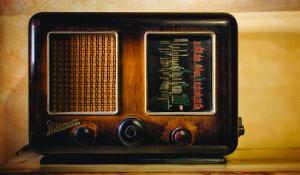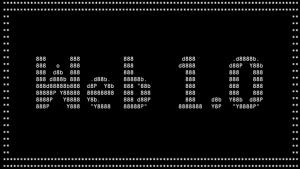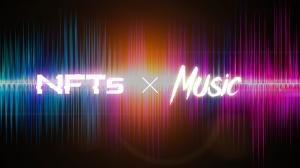A Musician's Journey: From Radio to Web3
Web 3.0, MetaVerse and NFT are almost a commonality at this point in the human technology cycle. But how did we get here? Or maybe a better question is, WHY?
ATLANTA, GA, USA, April 5, 2022 /EINPresswire.com/ -- IntroductionUnless you’re living under a rock, willfully ignorant or just too busy making ends meet by driving Uber, DoorDash, InstaCart and Lyft (inflation is real out here); by now you have probably heard of the blockchain. In fact, terms like crypto, Web 3.0, MetaVerse and NFT are almost a commonality at this point in the human technology cycle. But how did we get here? Or maybe a better question is, WHY did we get here? And exactly WHAT does all this mean?
As the creator of audio & visual content - operating under the pseudonym Alpha23 - and founder/CEO of a entertainment marketing firm, ADAM 4 Artists; examination of these factors seemed like a necessary step and a great way to introduce a new content focused publication to the world. So with that said, let’s dive in…
Web 0.0 (1920 - 1988) Let’s Just Say… Options Were Limited :(
For what seemed like an eternity, “modern” humans had consumed content in almost the same exact ways. For entertainment, the options were musicals, plays and events held live in-person. For in-home entertainment, consumption was achieved via information delivered through books. Stored data was a nonexistent concept. It was an analog world.
When Italian inventor Guglielmo Marconi first developed the idea of radio in 1890, he laid the groundwork for what would eventually evolve into modern radio. This evolution reached maturity almost exactly 100 years ago, during the early 1920’s, when public radio broadcasting started in the United States. During this period, families would gather in their living rooms and listen to news and entertainment content with, at most, 2 or 3 “channel” options. By 1931 radio had reached mass adoption, and a majority of US households owned at least one receiver. Little did anyone know; however, that radio’s singular dominance was set to take a major hit due to the handiwork of a 21 year old US farm boy named Philo Farnsworth.
On September 7th, 1927 the first television was successfully demonstrated. It would be over a decade later, on April 30th 1939, that the worlds first public telecast would go live, during which US President, Franklin D. Roosevelt opened the New York World's Fair with a public broadcast. The event was transmitted to US households courtesy of the aptly named NBC aka National Broadcasting Company. Understandably; however, due to cost constraints and limited availability of this groundbreaking new technology, television would go several decades before becoming a mass market household device. But by the 1950s, television was a popular fixture in many US homes.
Web 1.0 (1989 - 2004) I Chat, You Chat, We Chat Together :)
It wasn’t until the introduction of the modem and a radical new way of transmitting data, by converting a digital format into a format suitable for an analog transmission medium, such as telephone or radio, that traditional TV and radio’s vice grip on content consumption was suddenly challenged. Suddenly another device had the power to “own” the eyes, ears and minds of consumers everywhere; this weapon of mass distraction was the personal computer. It was time to introduce humanity to the internet, and the mind controlling power of pet memes.
During the five year period universally referred to as Web 1.0, companies like NetScape, America Online (AOL) and MySpace were born and rose to dominance. The key technical factors that defined and drove Web 1.0 were:
- Static pages.
- Content was served from the server’s file system.
- Pages built using Server Side Includes or Common Gateway Interface (CGI).
- Frames and Tables were used to position and align the elements on a page.
Suddenly chat rooms and electronic mail was a “thing”. The days of picking up a newspaper to search the classified ads for a new car, or owning volumes of Encyclopedia Brittanica’s to learn about African tribal customs, was coming to an end.
What hadn’t changed much; however, was, like during the golden era of TV & radio, the end user was still little more than a consumer of content, and content creators had to depend on highly centralized and gated means of distribution. During this period, “old school” radio still dominated the music discovery business, and the mass selling of music was still handled via record stores, much as it had been for decades prior. Record labels and media conglomerates reigned supreme; maintaining complete control of the manufacturing, marketing and distribution of music and video content.
Historically, for musicians, the only way across this media moat was to submit recorded demonstrations of their musical talent to gatekeepers, known as Artists and Repertoire (A&Rs). These demo tapes, although often professionally recorded, served only one purpose; discovery by record labels for the purpose of shilling out the ultra elusive “record deal”.
Web 2.0 (2005 - Present) Is This a WWW or an LLL?
If the internet revolution and Web 1.0 is credited as starting around 1989, then 2005 is generally considered the starting point for Web 2.0. However as a musicians, it’s important to step back and identify a few key events, driven by the internet, that laid the groundwork for the massive changes, logistically, that were soon to come.
- On June 1st, 1999 Napster launched.
- October 23, 2001 the first iPods were sold.
- On April 28, 2003 the Apple iTunes Store went live.
- August 1st, 2003 MySpace launched.
- April 23rd, 2006 Spotify launched.
- October 9th 2006, Google announced its acquisition of YouTube.
The first four events all took placed during the period that is widely accepted as web 1.0. They were significant, because without them, plus many more lesser publicized events, the artistic journey to Web 2.0 would’ve taken much longer and potentially looked quite different. $25 High Definition CDs anyone?
The key factor that all six of these events had in common, was the way in which they each contributed technology that undermined the dominance of the previously supreme media conglomerates. Napster, iTunes and Spotify rewrote the distribution and consumption models. iPod and MP3 players changed the delivery and storage models. MySpace changed the interaction and sharing models, and YouTube/Google irrevocably changed the creation and discovery models. Yes there were other key players and other key events, but from an initial impact or mass market adoption perspective, at least for music, these six events rewrote the future.
It is important to note; however, that of the six events highlighted, only Spotify’s launch and Google’s acquisition of YouTube occurred during the Web 2.0 timeframe. This is key, because both of these companies’ business models aligned with exactly what we look at, today, as Web 2.0. If the term that best describes Web 1.0 was content consumption, it is very safe, then, to state that the term best used for Web 2.0 was creation. In a nutshell, Web 2.0 was characterized by the rise of dominant media/technology hybrid companies that developed and distributed the tools necessary for the average consumer to become a content creator.
Obviously it’s impossible to speak on Web 2.0 without giving credit to Mark Zuckerberg for Facebook’s launch in 2004, and its subsequent acquisition of Instagram in 2012. Equally, if not more impactful; was Steve Jobs’ launching of the iPhone in 2007.
As highlighted, Facebook launched during the earliest stages of Web 2.0, around this time Zuckerberg is famously quoted as stating that Facebook would eventually become a mobile focused company, an important step in ensuring its rise and eventual overtaking of MySpace. In fact, it is possible to say that FaceBook was the single largest driver of Web 2.0 adoption, especially when combined with the success of iPhone.
If Facebook/InstaGram made content creation simple and available to everyone, not just those with musical and other media focused talents, then YouTube and Spotify made content creation and dissemination for creatives equally as accessible. Remember, prior to Web 2.0, there was little hope of achieving mass market success for recording artists without the intervention of a record label. Large media operations literally owned or controlled the supply lines for the manufacturing (vinyl, tape, cd), discovery (radio, tv) and distribution (independent record stores, big box retail) of music & music videos. With the rise of streaming, however, namely iTunes and Spotify, the manufacturing and distribution model underwent massive disruption.
The introduction of steaming was quickly followed by the rise of the “internet star”. For example, Soulja Boy and many other artists, who soon realized that they could take their content directly to consumers. YouTube, with its, back then, hundreds of millions of viewers and best-in-class search engine, provided the perfect content discovery model. Apple, FaceBook and Google also had the finances needed to battle the labels in court, as the labels attempted to wrestle back control of their, suddenly, under siege business model, using copyright laws and other tools.
The final “nail” in the coffin of the RIAA’s (Recording Industry Association of America’s) former model, was the introduction and growth of agnostic digital music distribution platforms - CDBaby, DistroKid, TuneCore and more. Services that allowed anyone to upload their music to the myriad of streaming companies that were born in the wake of Apple & Spotify’s growth. Suddenly, as an artists, one no longer needed a label to succeed. One could create, manufacture, promote and sell music without signing to a label. SoundCloud rose to prominence by making the process more centralized and even easier, removing the few bureaucratic barriers that remained. What a time to be an artist…
The Problematic Solution :/
Artists soon realized that, although they had finally been given the tools needed to give them their much desired independence, the financial rewards were a lot more elusive. Add to this the sudden flood of artist that were using the exact same tools, and it became obvious that market saturation was going to make it much harder to stand out and subsequently succeed.
Fans of music, on the other hand, had never had it better. What had previously cost hundreds of dollars annually to enjoy and own, during the days of Web 0.0 and Web 1.0, was now, all of a sudden, free or almost free with unlimited access. Access, albeit, without the benefit of “ownership”; but this was a small price to pay for a great many.
The inevitability of this problem was so encompassing that most artists found themselves with only two options. The first, and least financially beneficial of the two, was to complaint to any and everyone that would listen to stories about the scant per stream rate that companies like Apple and Spotify were paying musicians. Secondly, and only slightly less time wasting, was to get back on the record label bandwagon.
Although they had seen their business models irrevocably changed during the course of web 2.0, the label themselves had begun to experience somewhat of a renaissance. By adapting to the new environment, reducing expenses through consolidation, embracing streaming; as well as, using it to acquire the best talent and striking favorable content deals with the new streaming gatekeepers, the labels were once again in a position of dominance, although of a significantly smaller market. Behind the scenes, however, something was happening that could eventually represent a rare win for the millions of musicians that proudly called themselves “independent”.
Web 3.0 (2014 to Present) Wait… It’s Been Here This Long!?
For most people, the story of overnight Bitcoin Billionaires sounds a bit fluffed. Instead, stories from that one “uncle” about how he could have bought Bitcoin at $0.003, probably hit closer to home. Whatever one’s truth, the fact is, Bitcoin and crypto were now here! For many experts; however, the real value of this new technology was the underlying tech, not the assets laid on top of it. The blockchain represented an entirely new way to interact with… well… everything.
Described as a decentralized, distributed ledger that records the provenance of a digital asset; by its inherent design, the data on a blockchain is unable to be changed or modified. This made it a legitimate disruptor for industries like payments, cybersecurity and healthcare. Blockchain offered something we hadn’t witnessed in years; the opportunity to “own” the data one created.
The blockchain also offered a system of party-to-party transfer of digital assets, with universally accessible, transparent and verifiable contracts ensuring the asset’s legitimacy. Between January 9th, 2009, when Bitcoin & crypto launched, and present day, the “currency”, and its underlying technology, grew exponentially in price and popularity.
Hype is probably the best word to describe the period that started on March 11th, 2021 until now. On the aforementioned date, the artists “Beeple”, aka Mike Winkelmann, auctioned off his one of one digital art “collage” for $69,000,000 at Christie's. Suddenly a new acronym was imprinted onto the collective conscience of millions globally - NFT (this is also when most people first heard the term Web3).
NFT or Non-Fungible Tokens, represent a non-interchangeable unit of data stored on a blockchain, a form of digital ledger, that can be sold and traded. In other words, data units associated with digital files such as photos, videos, and audio, capable of being minted (written/programmed onto a digital on-chain contract) and sold.
Ethereum, a decentralized, open-source blockchain with smart contract functionality, conceived in 2013 by programmer Vitalik Buterin, suddenly became the equivalent of a blockchain superhighway. For NFT creators and buyers, Ethereum was the digital electricity that powered an entirely new market, technology and commerce stream. Ether, its native cryptocurrency, quickly rose to second place behind Bitcoin in market capitalization. Literally hundreds of hours and thousands of words can be spent on the pros and cons of Ethereum alone, but for now let’s focus on the beneficiaries of the not-so-new technology; digital art, and specifically musicians.
As previously discussed, for decades, musicians were forced into a business model that made them choose between independence or commercialization. For most it was either go it alone, down an extremely time and cost intensive pathway, or surrender all ownership rights to their art and take on a wealthy benefactor (labels). Year after year, this choice lead to all but the most dedicated musicians functionally giving up on their dream after investing countless finances, time and effort with little financial gain to show for their hard work. While almost all of those that were able to sign record deals ended up trading their life’s work, and freedom, for a significantly smaller piece of the reaped rewards. It’s rarely discussed, but for every artist that became wealthy and successful from a label contract, hundreds of nameless artists failed to even chart and got dropped into career ending obscurity. Which is why what came next will determine the future of the music industry for decades to come...
To Continue Reading See Below Website...
Or
Please Visit - https://www.youradam.com/post/a-musician-s-journey-from-radio-to-web3
Alpha23
ADAM 4 Artists
ADAM4Artists@gmail.com
Visit us on social media:
Twitter





